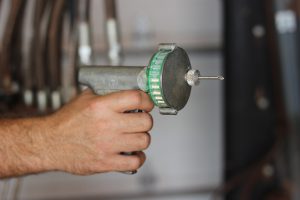New implant guidelines impacting reimplantation were announced

New rule changes applying to steroid-based, growth-promoting implants for cattle were recently released by the United States Food and Drug Administration through their Guidance for Industry 191. The new regulations, which went into effect July 1, state that implant product labels must explicitly indicate that they are approved for reimplantation or repeated administration.
The impact of the new regulation means that implants without the reimplantation label will not be able to be placed in cattle more than once per production cycle. Growth-promoting implants have been used for decades and are proven to increase average daily gain, making cattle more productive, so this regulation is being met with push-back from producers.
Earlier this year, the FDA released a letter explaining the new regulations and outlined three production phases and that there are one or more implants approved for use during each cycle. The first variant is beef calves 2 months of age or older. These are defined as beef calves considered ruminating and nursing their dam from 2 months of age to weaning. The FDA clearly states these animals can receive approved implants, but there are no implants labeled for reimplantation during this production phase. The second variant is growing beef steers and heifers on pasture, which includes stockers, feeders and slaughter cattle.

These are defined as weaned growing beef steers and heifers intended for slaughter and maintained on pasture. There are no implants approved for reimplantation for this phase and animals may only receive one implant while they fall under this umbrella. The final variant is growing beef steers and heifers fed in confinement for slaughter. These animals are weaned growing and finishing steers and heifers intended for slaughter. They are confined in pens and fed high-energy diets as their sole ration. There are multiple implants approved for use in reimplantation for this production phase.
“It is important to note that reimplantation across production phases is not affected by these pending label changes,” the FDA stated. “Beef cattle are and will still be allowed to receive multiple implants across different phases of production when using implants approved for that specific phase. Cattle can also receive more than one implant within a production phase, but only if that implant is approved for repeated administration.”
Some cattle producers may have to adjust their previous implant regimen as we move into fall when many calves are weaned and vaccinated. The FDA has provided a list of implants and their classifications within the reimplantation program that can be accessed by producers by visiting bit.ly/3Z2mLqn. Consult with a veterinarian if any questions arise as to whether or not reimplantation is allowed for certain implants and cattle production phases.
Lacey Vilhauer can be reached at 620-227-1871 or [email protected].



